DeFi
How to invest in DeFi: A complete step-by-step guide

Defi investment can be intimidating for those new to the crypto world. This guide aims to simplify the process by defining what DeFi is and highlighting potential investment opportunities for investors to consider.
What is DeFi?
Decentralized finance (DeFi) is an umbrella term for Internet-native financial products operating on public blockchains. In the DeFi market, you can access many of today’s products available in the traditional financial system, like borrowing, earning interest accounts, and trading.
However, DeFi doesn’t rely on intermediaries as traditional finance (TradFi) does. Instead, users interact with smart contracts allowing them to, for example, lend out their crypto assets to other users. In traditional finance, third parties typically slow down financial processes, and their involvement increases costs. If done right, in DeFi, these specific problems are mostly eliminated.
DeFi users enjoy 24/7 access to financial products from anywhere in the world and transparency thanks to blockchain technology, which makes all transactions visible to everyone. Moreover, users don’t have to provide their personal information like names, email addresses, and phone numbers, making DeFi pseudonymous. They simply connect their non-custodial wallets to the DeFi platforms, which allow them to move their crypto assets anywhere without requiring long transfers to complete or asking for approval.
DeFi is accessed through protocols — autonomous programs — built on Ethereum, BNB Smart Chain, Tron, Polygon, Avalanche, Solana, Arbitrum, Optimism, Cronos, and many other smart contract blockchain networks. Smart contracts are self-executing codes that live on the blockchain. They execute based on predetermined conditions, thereby generating an outcome.
What is DeFi investing?
DeFi investing means adding DeFi exposure into your portfolio, either by purchasing DeFi assets or by putting your money to work by deploying it in DeFi protocols to earn returns potentially.
Let’s take a look at the most common ways you can invest in the decentralized finance market.
Setting up your digital wallet
To invest in DeFi, you’ll need a digital wallet in which to store funds. Popular choices include MetaMask, Ledger, and Trust Wallet, so let’s take a look at how it’s done.
MetaMask
MetaMask is a cryptocurrency wallet where users can store Ethereum and other Ethereum-based tokens, with Ethereum being the main network used in decentralized finance.
Here’s how to set up your MetaMask wallet:
- Go to MetaMask.io
- Choose a browser and click “Install MetaMask”
- Click “Create a new wallet”
- You’ll be prompted to write down a series of words called a seed phrase. Keep this information safe! If you forget your password, this phrase is your backup password. You’ll want to store it offline away from hackers and be careful not to lose it.
- That’s it! You’ve now set up MetaMask. You can send Ethereum to the MetaMask deposit address and can connect your wallet to DeFi exchanges and other apps to make transactions. Check out this article on how to use the MetaMask wallet for more info.
Ledger
Ledger is a hardware wallet that stores crypto in cold storage or offline storage, which means it can’t be remotely accessed by other people. As such, it’s a highly secure option for anyone looking to safeguard their funds.
- Buy a Ledger wallet from the official ledger.com website
- When your hardware device arrives, download and install the app as per the device instructions
- Set up a new device and generate your seed phrase, AKA your recovery password, which should be stored somewhere safe and offline. If your device is damaged or lost, the seed phrase is the only way to recover your funds, so look after it!
- From there you can choose a password and PIN and store Ethereum as well as hundreds of other cryptos on your wallet.
Trust Wallet
Trust Wallet is a handy mobile wallet that allows you to store funds, swap them, buy crypto with a debit or credit card, and even access other DeFi protocols through its Web3 browser.
Here’s how to set it up.
- Install the Trust Wallet app on your mobile device
- Create a new account and generate your seed phrase, the backup password you’ll need if you lose or damage your phone. Seed phrases should always be stored offline in a safe place, and never disclosed to anyone online as they can be used to access your funds.
- Create a password for your wallet
- That’s it! You’re all set to deposit a wide variety of cryptos, buy some directly, and access DeFi protocols right away.
Great, our wallet is all set up. But how do you know which projects to invest in?
Selecting DeFi projects for investment
There are a lot of great decentralized finance projects, and a lot of projects that aren’t so great.
Things to factor in when you’re assessing a project are the reputation of a project, which you can measure from social media commentary and news coverage. If a project has suffered hacks and mismanagement, maybe it’s not the ideal place to store your funds. Newer projects are also typically viewed with skepticism due to the statistically higher risk of a scam or failure taking place.
Another factor to consider is the extent to which a project is actually decentralized. While the term is thrown around a lot in DeFi, many so-called DeFi projects are actually very centralized indeed, with a core team controlling the decisions being made, how the project funds are spent, and often having sole access to all funds deposited by users. This is a perfect storm for the dreaded “rug-pull” or exit scam where project staff simply drain the project’s coffers and disappear.
Of course, it’s easier to pull a move like that when the team is anonymous. For that reason, some investors prefer to choose projects with staff whose identities are public and who have strong track records of ethical project management.
The main area of focus, of course, is the use case and underlying technology of a project. What does it do? Is it useful? Is it solving a real problem, or was it simply created to capitalize on the DeFi boom? Reading a project whitepaper can often be illuminating, as it tends to reveal the full scope of a project’s goals, the level of thought and effort that has gone into the project, and what it actually does.
By choosing reputable projects that are decentralized (i.e., government democratically by their community) and have a strong use case that solves a real problem, investors can start identifying some potentially strong candidates for their portfolio.
All set picking projects? Great. Here’s how to invest in decentralized finance.
How to invest in DeFi: Options
Investing in DeFi tokens
This is probably the easiest way to invest in DeFi since it involves investing in DeFi tokens. A DeFi token is the native crypto asset of a specific DeFi protocol. Such a token enables users to interact with the protocol in various ways depending on the purpose it has been given. For instance, governance is a common purpose given to tokens on several DeFi protocols. They give holders voting rights, allowing them to participate in protocol governance.
Investors can speculate on the future prices of these tokens by adding them to their crypto investment portfolios. Besides long-term holding, investors with trading expertise may exploit the price movements of DeFi tokens to potentially make even more money.
Examples of popular DeFi tokens include UNI (Uniswap), AAVE (Aave), MKR (Maker), and SNX (Synthetix). Besides their native tokens, some protocols issue stablecoins as well. These are digital assets pegged to stable assets like the US dollar, making them less volatile.
DeFi users may utilize stablecoins as collateral when borrowing because of their price stability. DAI is a well-known stablecoin in the world of DeFi. A decentralized autonomous organization (DAO) called MakerDAO manages its issuance.
Buying a DeFi token index
Crypto token indexes track the price of a bundle of crypto assets, permitting investors to diversify their crypto portfolios cost-effectively.
Diversification is an investment strategy where investors minimize risk by investing in different assets. A DeFi token index tracks the price of a bundle of DeFi tokens. One such example is the DeFi Pulse Index Token (DPI).
DeFi Pulse Index (DPI) is an Ethereum-based token that tracks the performance of different DeFi tokens. The underlying assets in the DPI index have to be available on Ethereum and must be associated with a DeFi protocol listed on DeFi Pulse, a website that tracks and ranks DeFi projects. Also, it only tracks projects that have significant usage and are committed to protocol development. The index doesn’t include crypto assets that are securities, synthetic digital assets, or wrapped tokens.
Investors can buy DPI on KuCoin, Gemini, Sushiswap, Uniswap, and 1inch Exchange. The underlying tokens in the index are Uniswap, Yearn, Compound, Rari Capital, Loopring, Maker, Sushi, Aave, Balancer, Cream, Farm, Vesper, Instadapp, Synthetix, Badger, Kyber Network Crystal, and Ren. DPI is “weighted based on the value of each token’s circulating supply” and is managed every quarter.
Phuture DeFi Index (DPI) is another DeFi token index. It provides exposure to the top DeFi tokens by market capitalization. The underlying crypto assets are selected if they are on the Ethereum blockchain and listed on the DeFi data website, DeFi Llama. PDI is maintained monthly. Investors can buy PDI on the Bancor Network and the Phuture website. The assets in this index include Aave, Uniswap, Sushi, Maker, Compound, 1Inch, Yearn Finance, Balancer, Amp, and Lido.
Engaging in DeFi lending
DeFi lending is a way for investors to lend their crypto assets to other users on a lending protocol. This way, they generate interest, which is automatically calculated by an algorithm based on the changing supply and demand for loans. Lenders receive frequent interest payments in crypto.
DeFi protocols protect lenders by demanding that borrowers overcollateralize their loans. This means the collateral exceeds the loan value. If the borrower fails to maintain the collateral above the required threshold, a margin call occurs, and the protocol liquidates it to pay down the outstanding debt position.
Yield farming & liquidity mining
Liquidity mining is the process of depositing crypto assets in a liquidity pool. In exchange for providing liquidity, liquidity miners earn a reward in the form of transaction fees calculated as an annual percentage yield (APY).
Yield farming, on the other hand, is a subset of liquidity mining. Hence, it also entails providing liquidity to a pool. However, instead of just earning rewards sourced from transaction fees, they also receive the protocol’s native token (typically a governance token) on top of the fees. Investors who want to maximize their returns may “farm” for more yields by moving their crypto assets around in search of pools with the best APYs.
Monitoring and managing your investments
DeFi investors often invest in the hopes of passive income, but the truth is that some maintenance is required no matter what you do. Successful investors typically use a portfolio management software to track the progress of their investments and stick to any pre-determined profit or loss goals they’ve established.
Outlining such goals, and a wider investment plan in general, is considered wise by most investors. Investors typically choose an exit strategy, meaning they know exactly how much profit they’re looking for and have the discipline to sell their assets at a certain price point instead of simply letting gains ride without a concrete plan.
It’s also a common practice in financial investments of any kind to ensure that the portfolio is diverse enough to withstand the downturn. This means that while one project might do poorly, the other investments in your portfolio aren’t all so connected to the first project that they all fail at the same time.
The Risk of DeFi Investing
DeFi investing could be rewarding, but it comes with a few risks. They are as follows:
- Smart contract risk: Poorly developed smart contracts may have bugs, creating a potential loophole that a hacker can use to steal funds.
- Market risk: Crypto assets in a pool could lose their value if prices drop sharply from the time they were deposited. Hence, investors who remove their assets from the pool at such a time may incur losses. Drastic price crashes could also remove a lot of liquidity from the pool, resulting in high levels of slippage. This could mean buyers will pay more for assets than expected. Slippage is the difference between the quoted price and the actual price when an order is executed.
- Governance attacks: An entity could purchase a majority of the protocol’s governance tokens, helping them influence the outcome of votes.
- Custody risk: Investors are in charge of keeping their crypto assets. This is a huge responsibility that requires a lot of caution. Careless investors are, therefore, in danger of losing their private keys, meaning they can’t access their funds.
- Regulatory risk: The DeFi markets are essentially unregulated, making them a target for financial regulators, which, in turn, creates a risk of investors holding DeFi assets that may be negatively affected by regulations that could be rolled out in the future.
FAQs
How Much Should I Invest in DeFi?
You should never invest what you cannot afford to lose. This applies to DeFi investing as well. DeFi beginners may be better off investing a small amount at first. Once they understand how DeFi works, they could increase the size of their investment. But remember that DeFi is generally a lot riskier than buying and holding Bitcoin, for example.
Is DeFi a Good Investment?
The definition of a “good” investment will vary from person to person. It is based on their risk tolerance and the returns they expect from their investment. What DeF is for certain, however, is very risky. So you should never invest more than you can afford to lose.
How Can I Get Started in DeFi?
Open the DeFi protocol of your choice in your browser and connect a supported wallet. Next, add the required cryptocurrency to your wallet and start staking, lending, borrowing, or swapping tokens.
DeFi
Pump.Fun is revolutionizing the Ethereum blockchain in terms of daily revenue

The memecoin launchpad saw the largest daily revenue in all of DeFi over the past 24 hours.
Memecoin launchpad Pump.Fun has recorded the highest gross revenue in all of decentralized finance (DeFi) in the last 24 hours, surpassing even Ethereum.
The platform has raised $867,429 in the past 24 hours, compared to $844,276 for Ethereum, according to DeFiLlama. Solana-based Telegram trading bot Trojan was the third-highest revenue generator of the day, as memecoin infrastructure continues to dominate in DeFi.
Pump.Fun generates $315 million in annualized revenue according to DeFiLlama, and has averaged $906,160 per day over the past week.
Income Ranking – Source: DeFiLlama
The memecoin frenzy of the past few months is behind Pump.fun’s dominance. Solana-based memecoins have been the main drug of choice for on-chain degenerates.
The app allows non-technical users to launch their own tokens in minutes. Users can spend as little as $2 to launch their token and are not required to provide liquidity up front. Pump.Fun allows new tokens to trade along a bonding curve until they reach a set market cap of around $75,000, after which the bonding curve will then be burned on Raydium to create a safe liquidity pool.
Pump.Fun generates revenue through accrued fees. The platform charges a 1% fee on transactions that take place on the platform. Once a token is bonded and burned on Raydium, Pump.fun is no longer able to charge the 1% fee.
Ethereum is the blockchain of the second-largest cryptocurrency, Ether, with a market cap of $395 billion. It powers hundreds of applications and thousands of digital assets, and backs over $60 billion in value in smart contracts.
Ethereum generates revenue when users pay fees, called gas and denominated in ETH, to execute transactions and smart contracts.
DeFi
DeFi technologies will improve trading desk with zero-knowledge proofs
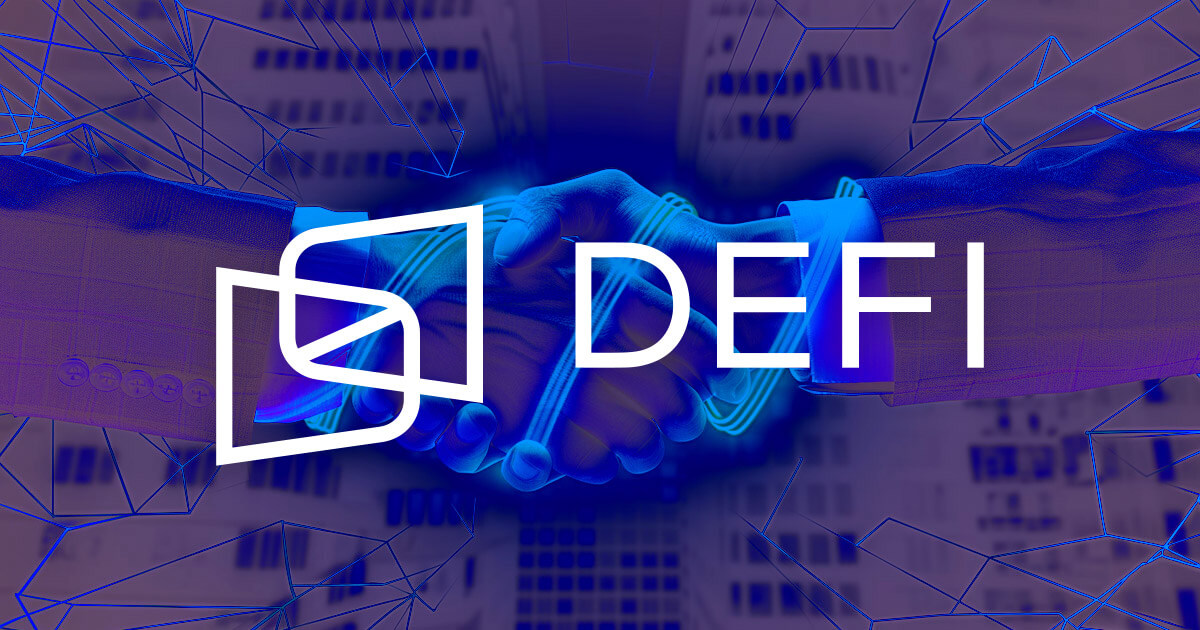
DeFi Technologies, a Canadian company financial technology companyis set to enhance its trading infrastructure through a new partnership with Zero Computing, according to a July 30 statement shared with CryptoSlate.
The collaboration aims to integrate zero-knowledge proof tools to boost operations on the Solana And Ethereum blockchains by optimizing its ability to identify and execute arbitrage opportunities.
Additionally, it will improve the performance of its DeFi Alpha trading desk by enhancing its use of ZK-enabled maximum extractable value (MEV Strategies).
Zero knowledge Proof of concept (ZKP) technology provides an additional layer of encryption to ensure transaction confidentiality and has recently been widely adopted in cryptographic applications.
Optimization of trading strategies
DeFi Technologies plans to use these tools to refine DeFi Alpha’s ability to spot low-risk arbitrage opportunities. The trading desk has already generated nearly $100 million in revenue this year, and this new partnership is expected to further enhance its algorithmic strategies and market analysis capabilities.
Zero Computing technology will integrate ZKP’s advanced features into DeFi Alpha’s infrastructure. This upgrade will streamline trading processes, improve transaction privacy, and increase operational efficiency.
According to DeFi Technologies, these improvements will increase the security and sophistication of DeFi Alpha’s trading strategies.
The collaboration will also advance commercial approaches for ZK-enabled MEVs, a new concept in Motor vehicles which focuses on maximizing value through transaction fees and arbitrage opportunities within block production.
Additionally, DeFi Technologies plans to leverage Zero Computing technology to develop new financial products, such as zero-knowledge index exchange-traded products (ETPs).
Olivier Roussy Newton, CEO of DeFi Technologies, said:
“By integrating their cutting-edge zero-knowledge technology, we not only improve the efficiency and privacy of our transactions, but we also pave the way for innovative trading strategies.”
Extending Verifiable Computing to Solana
According to the release, Zero Computing has created a versatile, chain-agnostic platform for generating zero-knowledge proofs. The platform currently supports Ethereum and Solana, and the company plans to expand compatibility with other blockchains in the future.
The company added that it is at the forefront of introducing verifiable computation to the Solana blockchain, enabling complex computations to be executed off-chain with on-chain verification. This development represents a significant step in the expansion of ZKPs across various blockchain ecosystems.
Mentioned in this article
Latest Alpha Market Report
DeFi
Elastos’ BeL2 Secures Starknet Grant to Advance Native Bitcoin Lending and DeFi Solutions
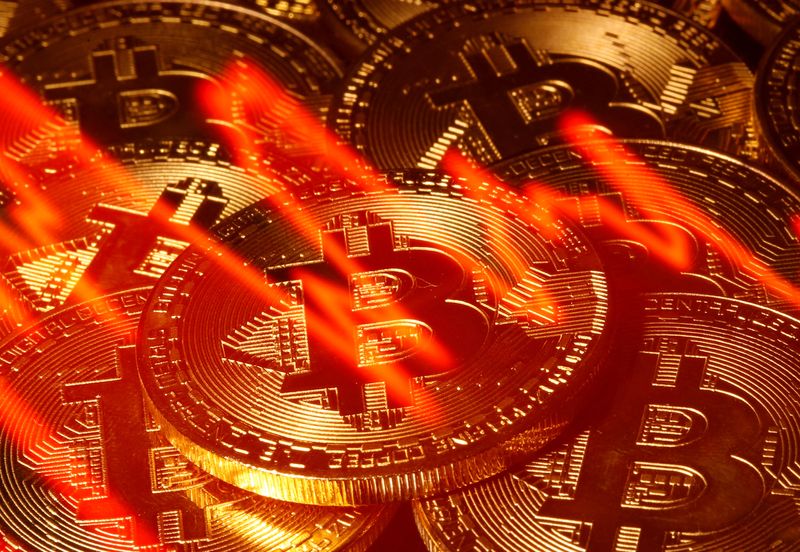
Singapore, Asia, July 29, 2024, Chainwire
- Elastos BeL2 to Partner with StarkWare to Integrate Starknet’s ZKPs and Cairo Programming Language with BeL2 for Native DeFi Applications
- Starknet integration allows BeL2 to provide smart contracts and dapps without moving Bitcoin assets off the mainnet
- Starknet Exchange Validates the Strength of BeL2’s Innovation and Leadership in the Native Bitcoin Ecosystem
Elastos BeL2 (Bitcoin Elastos Layer2) has secured a $25,000 grant from Starknet, a technology leader in the field of zero-knowledge proofs (ZKPs). This significant approval highlights the Elastos BeL2 infrastructure and its critical role in advancing Bitcoin-native DeFi, particularly Bitcoin-native lending. By integrating Starknet’s ZKPs and the Cairo programming language, Elastos’ BeL2 will enhance its ability to deliver smart contracts and decentralized applications (dapps) without moving Bitcoin (BTC) assets off the mainnet. This strategic partnership with Starknet demonstrates the growing acceptance and maturity of the BeL2 infrastructure, reinforcing Elastos’ commitment to market leadership in the evolving Bitcoin DeFi market.
Starknet, developed by StarkWare, is known for its advancements in ZKP technology, which improves the privacy and security of blockchain transactions. ZKPs allow one party to prove to another that a statement is true without revealing any information beyond the validity of the statement itself. This technology is fundamental to the evolution of blockchain networks, which will improve BeL2’s ability to integrate complex smart contracts while preserving the integrity and security of Bitcoin.
“We are thrilled to receive this grant from Starknet and announce our partnership to build tighter integrations with its ZKP technology and the Cairo programming language,” said Sasha Mitchell, Head of Bitcoin Layer 2 at Elastos. “This is a major milestone for BeL2 and a true recognition of the maturity and capabilities of our core technology. This support will allow us to further develop our innovation in native Bitcoin lending as we look to capitalize on the growing acceptance of Bitcoin as a viable alternative financial system.”
A closer integration with Cairo will allow BeL2 to leverage this powerful programming language to enhance Bitcoin’s capabilities and deliver secure, efficient, and scalable decentralized finance (DeFi) applications. Specifically, the relationship with Cairo reinforces BeL2’s core technical innovations, including:
- ZKPs ensure secure and private verification of transactions
- Decentralized Arbitrage Using Collateralized Nodes to Supervise and Enforce Fairness in Native Bitcoin DeFi
- BTC Oracle (NYSE:) facilitates cross-chain interactions where information, not assets, is exchanged while Bitcoin remains on the main infrastructure
BeL2’s vision goes beyond technical innovation and aims to innovate by creating a new financial system. The goal is to build a Bitcoin-backed Bretton Woods system, address global debt crises, and strengthen Bitcoin’s role as a global hard currency. This new system will be anchored in the integrity and security of Bitcoin, providing a stable foundation for decentralized financial applications.
As integration with Starknet and the Cairo programming language continues, BeL2 will deliver further advancements in smart contract capabilities, decentralized arbitration, and innovative financial products. At Token 2049, BeL2 will showcase further innovations in its core technologies, including arbitrators, that will underscore Elastos’ vision for a fairer decentralized financial system rooted in Bitcoin.
About Elastos
Elastos is a public blockchain project that integrates blockchain technology with a suite of redesigned platform components to produce a modern Internet infrastructure that provides intrinsic privacy and ownership protection for digital assets. The mission is to create open source services that are accessible to the world, so developers can create an Internet where individuals own and control their data.
The Elastos SmartWeb platform enables organizations to recalibrate how the Internet operates to better control their own data.
https://www.linkedin.com/company/elastosinfo/
ContactPublic Relations ManagerRoger DarashahElastosroger.darashah@elastoselavation.org
DeFi
Compound Agrees to Distribute 30% of Reserves to COMP Shareholders to End Alleged Attack on Its Governance

Compound will introduce the staking program in exchange for Humpy, a notorious whale accused of launching a governance attack on the protocol, negating a recently adopted governance proposal.
Compound is launching a new staking program for COMP holders as a compromise with Humpy, a notorious DeFi whale accused of launching a governance attack against the veteran DeFi protocol.
On July 29, Bryan Colligan, head of business development at Compound, published a governance proposal outlining plans for a new compound participation product that would pay 30% of the project’s current and future reserves to COMP participants.
Colligan noted that the program was requested by Humpy in exchange for his agreement Proposition 289 — which sought to invest 499,000 COMP worth approximately $24 million into a DeFi vault controlled by Humpy, and which appears to have been forced by Humpy and his associates over the weekend.
“We propose the following staking product that meets Humpy’s stated interests as a recent new delegate and holder of COMP in exchange for the repeal of Proposition 289 due to the governance risks it poses to the protocol,” Colligan said. “The Compound Growth Program…will execute the above commitments, given the immediate repeal of Proposition 289.”
Colligan added that the proposal would expire at 11:59 p.m. EST on July 29. Had Humpy not rescinded Proposition 289, Compound would move forward with it. Proposition 290 — block Humpy using the Compound team’s multi-sig to deploy a new governor contract removing the delegate’s governance power behind Proposition 289.
Hunchback tweeted that Proposition 289 had been repealed a few hours ago. “Glad to have brought Compound Finance back into the spotlight,” they said. added. “StakedComp… finally becomes a yield-generating asset!
Markets reacted favorably to the resolution, with the price of COMP increasing by 6.2% over the past 24 hours, according to CoinGecko.
Attack on governance
Proposition 289 proposed investing 499,000 COMP from the Compound treasury into goldCOMP, a yield-generating vault of the Humpy-linked Golden Boys team.
The proposal passed with nearly 52 percent of the vote on July 28, despite two previous iterations of the proposal being defeated by strong opposition. Can And JulyThe proposals notably asked for only 92,000 COMP, with security researchers warning that any deposit of tokens into the goldCOMP vault would cede their governance power.
In May, Michael Lewellen of Web3 security firm OpenZeppelin, note The first proposal was submitted by a new governance delegate who was suddenly awarded 228,000 COMP by five wallets that got their tokens from the Bybit exchange. Combined with his own tokens, the delegate got 325,333 COMP, which is over 81% of the 400,000 tokens required for a governance proposal to reach quorum.
“We have been alerting the community to the risk that these delegates could support a potential attack on governance,” Lewellen said. “The timing of the new proposal and these recent delegations are suspect.”
Read more: Compound community accuses famous whale of attacking engineering governance
-

 Videos1 month ago
Videos1 month agoAbsolutely massive: the next higher Bitcoin leg will shatter all expectations – Tom Lee
-

 News12 months ago
News12 months agoVolta Finance Limited – Director/PDMR Shareholding
-
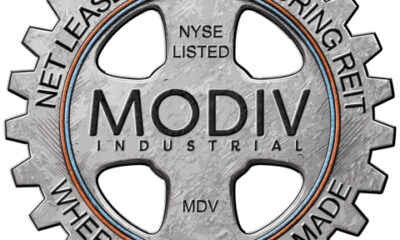
 News12 months ago
News12 months agoModiv Industrial to release Q2 2024 financial results on August 6
-

 News12 months ago
News12 months agoApple to report third-quarter earnings as Wall Street eyes China sales
-

 News12 months ago
News12 months agoNumber of Americans filing for unemployment benefits hits highest level in a year
-
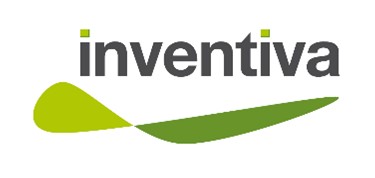
 News1 year ago
News1 year agoInventiva reports 2024 First Quarter Financial Information¹ and provides a corporate update
-

 News1 year ago
News1 year agoLeeds hospitals trust says finances are “critical” amid £110m deficit
-

 Markets1 year ago
Markets1 year agoWhale Investments in Bitcoin Hit $100 Billion in 2024, Fueling Insane Investor Optimism ⋆ ZyCrypto
-
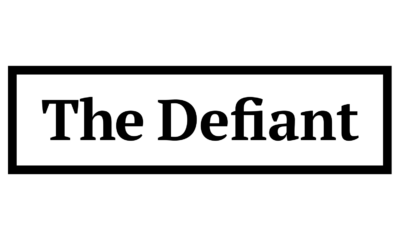
 DeFi1 year ago
DeFi1 year ago🏴☠️ Pump.Fun operated by Insider Exploit
-

 Videos1 year ago
Videos1 year ago$1,000,000 worth of BTC in 2025! Get ready for an UNPRECEDENTED PRICE EXPLOSION – Jack Mallers
-

 Videos1 year ago
Videos1 year agoABSOLUTELY HUGE: Bitcoin is poised for unabated exponential growth – Mark Yusko and Willy Woo
-

 Tech1 year ago
Tech1 year agoBlockDAG ⭐⭐⭐⭐⭐ Review: Is It the Next Big Thing in Cryptocurrency? 5 questions answered





